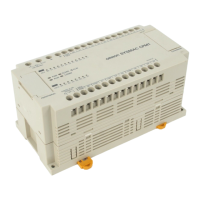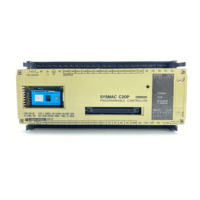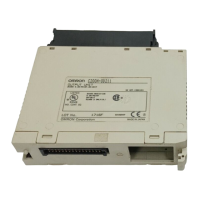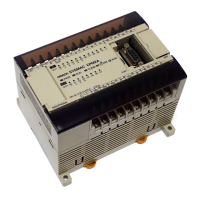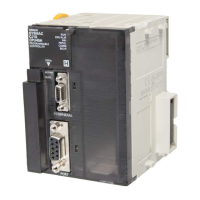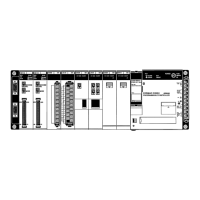Do you have a question about the Omron SYSMAC CV Series and is the answer not in the manual?
| Series | SYSMAC CV Series |
|---|---|
| Type | PLC |
| Input Voltage | 100 to 240 VAC, 24 VDC |
| Number of Inputs | Varies by model |
| Number of Outputs | Varies by model |
| I/O Capacity | Up to 2048 points |
| I/O Points | Varies by model |
| Communication Ports | RS-232C, RS-422/485 |
| Programming Language | Ladder Logic |
| Power Supply | 100-240V AC or 24V DC |
| Mounting | DIN rail mounting |
| Operating Temperature | 0°C to 55°C |
User must operate product per specifications; consult OMRON for non-manual conditions or critical systems.
Precautions regarding power supply, terminal touching, disassembly, repair, and battery handling.
Guidelines for environmental conditions for PC system installation and operation.
Precautions for safe PC system usage, grounding, power supply, wiring, and program changes.
Covers file memory used to store programs and other data, including RAM, EPROM, and EEPROM types.
Provides an overview of the PC configuration, including CPU Rack, Expansion CPU Rack, and Expansion I/O Rack.
Describes two sets of addresses for accessing PC memory: data area addresses and memory addresses.
Details CIO Area addresses, divided into eight data areas for I/O control and internal data manipulation.
Contains flags and control bits for monitoring and controlling PC operation, accessing clock pulses, and signaling errors.
Outlines basic steps for writing a program, including I/O device list and work bit allocation.
Describes ladder diagrams, which consist of vertical lines (bus bars) and branching lines (instruction lines or rungs).
Lists instructions used to control individual bit status, such as OUTPUT, SET, RESET, and KEEP.
Provides guidelines on programming practices, such as unlimited conditions in series or parallel and avoiding vertical conditions.
Covers instructions that correspond to ladder diagram conditions and logic block instructions for complex relationships.
Explains instructions used to control bit status by turning bits ON and OFF in different ways.
Details instructions for creating timers and counters, accessing PVs and Completion Flags.
Explains instructions used for moving data between different addresses in data areas.
Covers instructions used for comparing data, affecting comparison flags and outputting results.
Explains instructions that convert word data from one format to another, outputting converted data to specified result words.
Explains operations affecting cycle time and I/O response time, and shows basic cycle time calculation.
Explains the time taken for the PC to output a control signal after receiving an input signal.
Classifies errors into initialization, non-fatal operating, and fatal operating errors for message display.
Details all ladder diagram programming instructions, variations, and applicable data areas.
Explains instructions affecting ER, CY, GR, LE, EQ, OF, UF, and N flags.
Lists default values for PC Setup parameters.
Summarizes data areas in CV-series PCs, including CIO, Temporary Relay, and Auxiliary Areas.

